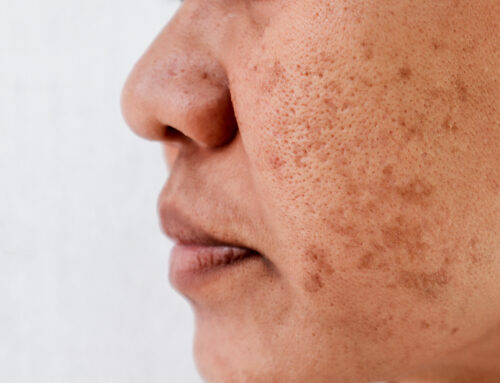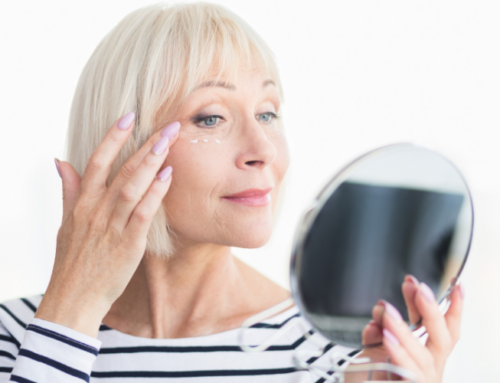Hydroxy acids have become some of the most popular skin care ingredients, thanks to their many benefits, including increased collagen and hyaluronic acid production and improved smoothness and radiance. While many different hydroxy acid products can be used in your daily skin care regimen, such as your cleanser and moisturizer, you can also get a hydroxy acid chemical peel in your dermatologist’s office.
What Are Hydroxy Acids?
There are several different kinds of hydroxy acids, including alpha hydroxy acids (AHAs), polyhydroxy acids (PHAs), and beta hydroxy acid (BHA). They are naturally-occurring organic acids that perform two primary functions when used topically on the skin: 1) accelerate the skin cell cycle and 2) increase exfoliation by helping dead skin cells separate from one another and flake off.
Thus, there is a variety of uses for hydroxy acids in your skin care regimen, and the type and formulation of acid will depend on your skin type and needs. Glycolic acid, for example, is commonly used to help stimulate collagen production and improve wrinkles, while phytic acid has antioxidant qualities and helps to fight photodamage caused by the sun.
Hydroxy acids have also been used to help treat acne, rosacea, psoriasis, dry skin, melasma, and other conditions.
How Do Hydroxy Acid Chemical Peels Work?
Unlike hydroxy acid cleansers and moisturizers, which are used as a regular part of your skin care routine, hydroxy acid chemical peels are performed occasionally in your doctor’s office. They must be performed by a trained professional, so be sure to do your research before choosing a provider for a chemical peel.
Chemical peels provide similar benefits as the hydroxy acid products that may be in your daily regimen, but they are washed off and neutralized after a set amount of time. The preparation, duration, and frequency of your chemical peel will depend on factors like your skin type, complexion concerns, and whether or not you have had a chemical peel in the past. If you have never had a chemical peel before, it is best to start with a light peel.
You will see the best results after a series of at least four peels, although some people may benefit from up to eight treatments, depending on the severity of their skin issues.
Types of Chemical Peels
Work with a trained and experienced professional to help you decide which chemical peel may be right for your skin. A few of the most popular chemical peels are:
Glycolic acid peel. Glycolic acid is one of the most common ingredients in chemical peels. These peels are sometimes referred to as “lunchtime peels,” since they can be done relatively quickly and generally do not leave any signs of redness or other side effects on the skin afterwards. Glycolic acid has been shown to help stimulate collagen production and improve wrinkles.
Salicylic acid peel. Salicylic acid (SA) is the only beta hydroxy acid (BHA) and is derived from willow bark, wintergreen leaves, and sweet birch. Most in-office SA peels have a concentration of 20% to 30%, although you can buy over-the-counter SA peels with a much lower concentration and therefore lower effectiveness. SA peels are used to improve the skin’s tone and texture and minimize the appearance of fine lines. This ingredient also has strong anti-inflammatory properties, making it a good choice for people with acne and rosacea.
Combination peels. Jessner’s peel and other combination peels like the PCA peel™ use a combination of ingredients, such as salicylic acid, lactic acid, and resorcinol. Jessner’s peel can also be used in combination with other peels, and the strength of the peel is determined by how many layers are applied.
What Are the Risks of Chemical Peels?
Salicylic acid and resorcinol may cause hyperpigmentation, and SA can cause lightening of the skin. If not neutralized properly, glycolic acid peels can cause burning. For these reasons, it is imperative that you work with a trained and experienced professional any time you get a chemical peel of any sort.
It is also worth noting that you need to have realistic expectations with chemical peels. After only one or two peels, you will not likely see profound changes to your complexion. The biggest benefits come after a series of 4 to 8 peels, depending on your skin type and severity of the condition you’d like to treat.
In Summary
In-office hydroxy acid chemical peels have many uses for aging skin, sun damage, acne, redness, and other common skin concerns. Just be sure you are working with a professional to avoid complications and serious side effects.
For more skin care science and advice, follow Baumann Cosmetic on Facebook, Instagram, and YouTube.
©2018 MetaBeauty, Inc.





